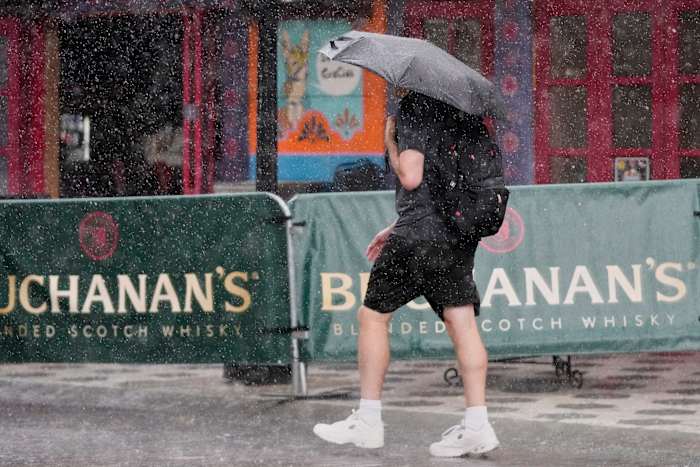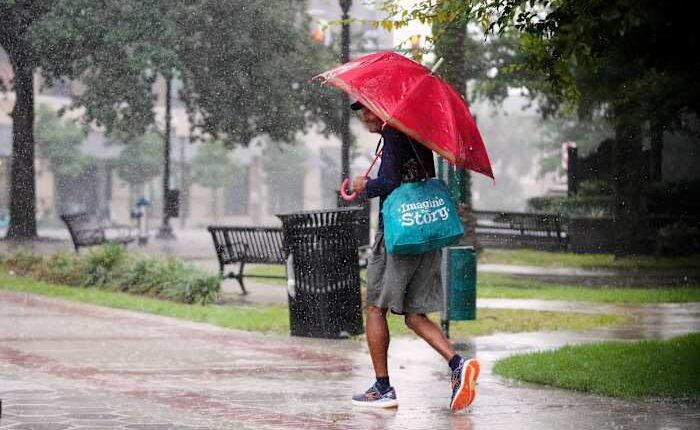Share this @internewscast.com

ORLANDO, Fla. – A weather system moving across Florida on Tuesday wasn’t classified as a tropical entity, but it has the possibility of developing into a tropical depression as it progresses into the northeastern and northern Gulf later this week, as forecasted by the National Weather Service.
If this system progresses into a named storm, it would be called Tropical Storm Dexter. However, it is anticipated to be significantly less dangerous than the fictional character Dexter, the vigilante serial killer from the Showtime series “Dexter,” which was set in Florida.
The National Weather Service reported that the low-pressure area off Florida’s east coast was becoming more organized and was moving westward across the Florida Peninsula on Tuesday. This system was bringing heavy rains to the region, prompting the weather service to issue warnings about the risk of flash flooding in parts of the state throughout the week.
“Environmental conditions appear generally favorable for additional development, and a tropical depression could form by the middle to latter part of this week as the system moves across the northeastern and north-central Gulf,” the National Weather Service said.
How many storms have we had so far?
Just six weeks into the start of the 2025 Atlantic hurricane season, three tropical storms have developed — Andrea, Barry and Chantal. Dexter would be the fourth if it develops that way.
Andrea dissipated in the Atlantic after forming at sea last month. Barry dumped rain on eastern Mexico at the end of last month. Chantal made landfall in South Carolina last week, and its remnants caused flooding in North Carolina that killed an 83-year-old woman when her car was swept off a rural road. Floodwaters also forced dozens of people to flee their homes in North Carolina.
How many Atlantic storms are predicted this season?
The National Oceanic and Atmospheric Administration in May forecast 13 to 19 named storms, with six to 10 becoming hurricanes and three to five reaching major status with winds of more than 110 mph (177 kph). A normal season has 14 named storms, seven of which strengthen to hurricanes and three power up further to major hurricanes.
Colorado State University researchers last month estimated there would be 17 named storms this year, with nine of them becoming hurricanes. Of the predicted hurricanes, the researchers said four could become major hurricanes.
‘Weather modification’ reports required in Florida
With hurricane season on Floridians’ minds, state Attorney General James Uthmeier this week sent a letter to the state’s airports telling them that they must report the presence of any aircraft used for the purposes of “weather modification” starting in October to comply with a new Florida law.
After flash floods killed scores of Texas residents over the Fourth of July holiday weekend, social media users spread false claims that the devastation was caused by weather modification. Many pointed to one process in particular, blaming cloud seeding performed on July 2 by a California-based company for the tragedy. But officials say there is no evidence that the floods are the result of cloud seeding and experts agree that cloud seeding would not result in precipitation of this magnitude.
Uthmeier said at a news conference on Tuesday that “this stuff sounds pretty scary to me.”
“My letter was to put airports on notice that they do have obligations and could face penalties, including some criminal penalties, if they don’t comply,” Uthmeier said.
___
Follow Mike Schneider on the social platform Bluesky: @mikeysid.bsky.social.
Copyright 2025 The Associated Press. All rights reserved. This material may not be published, broadcast, rewritten or redistributed without permission.











